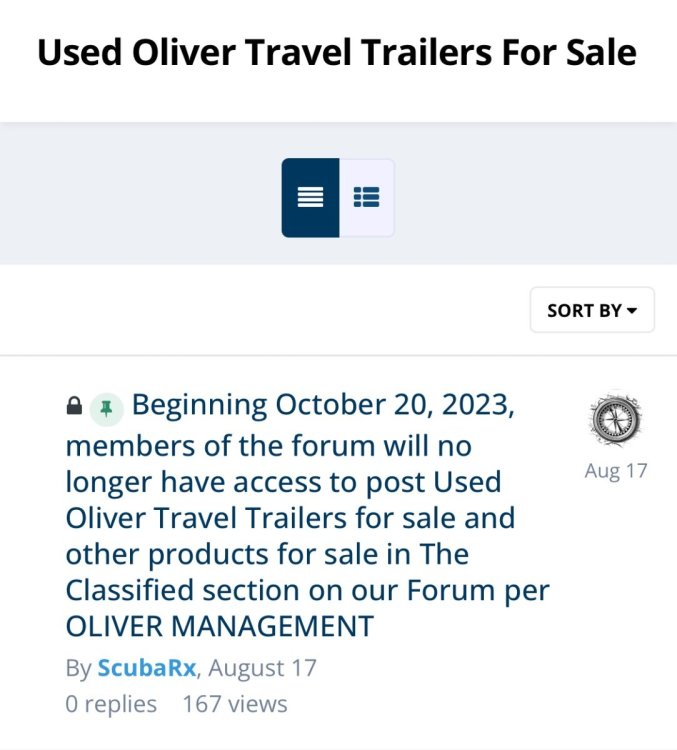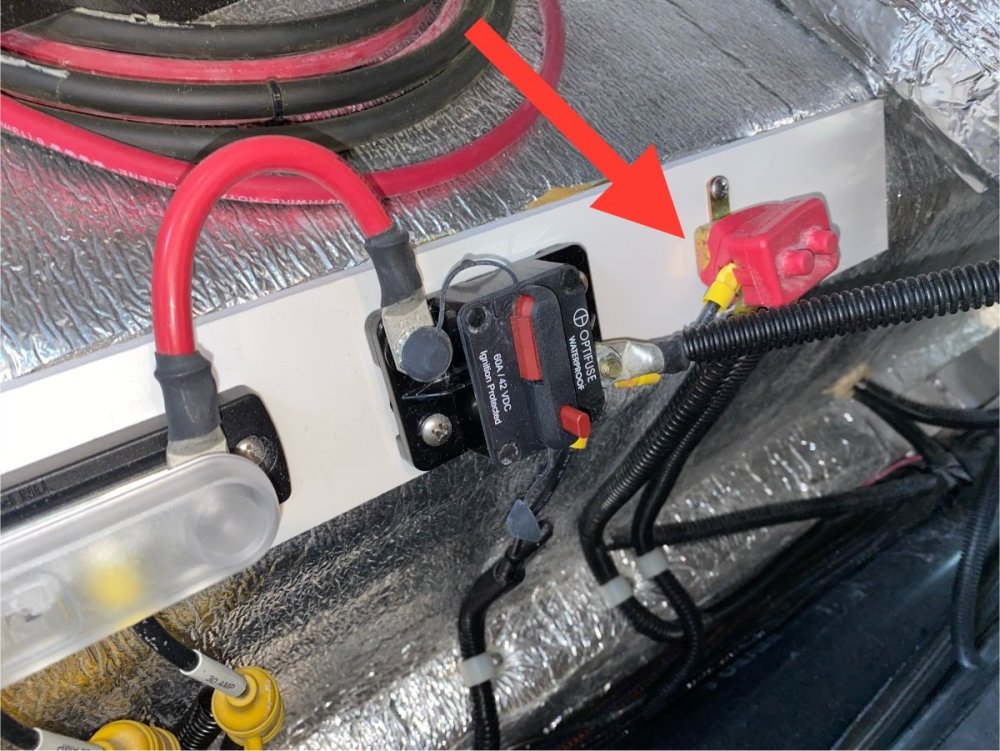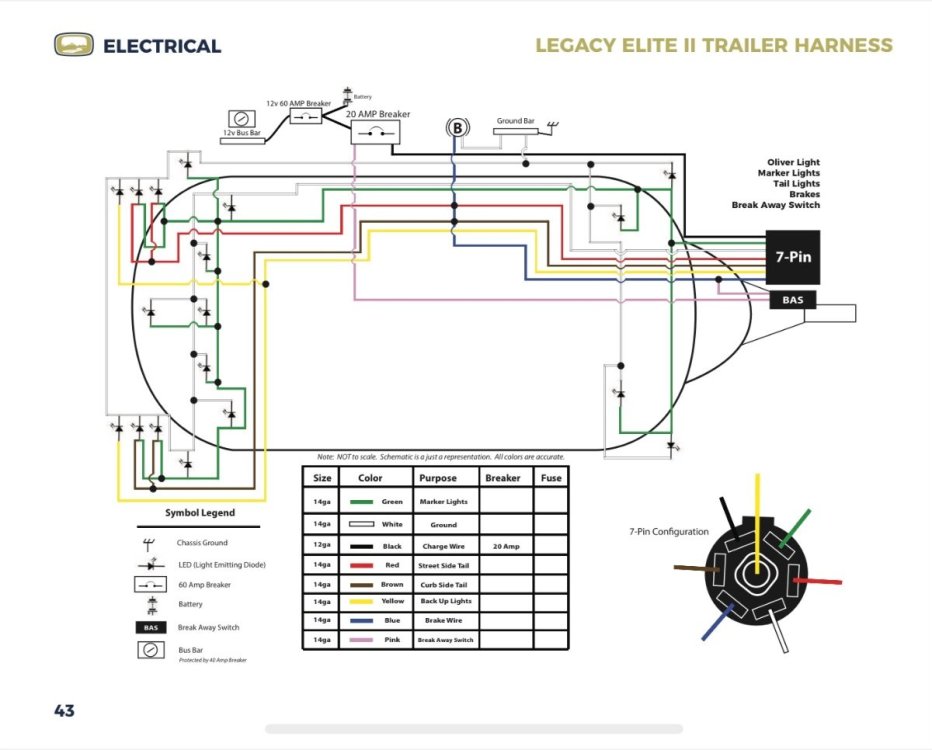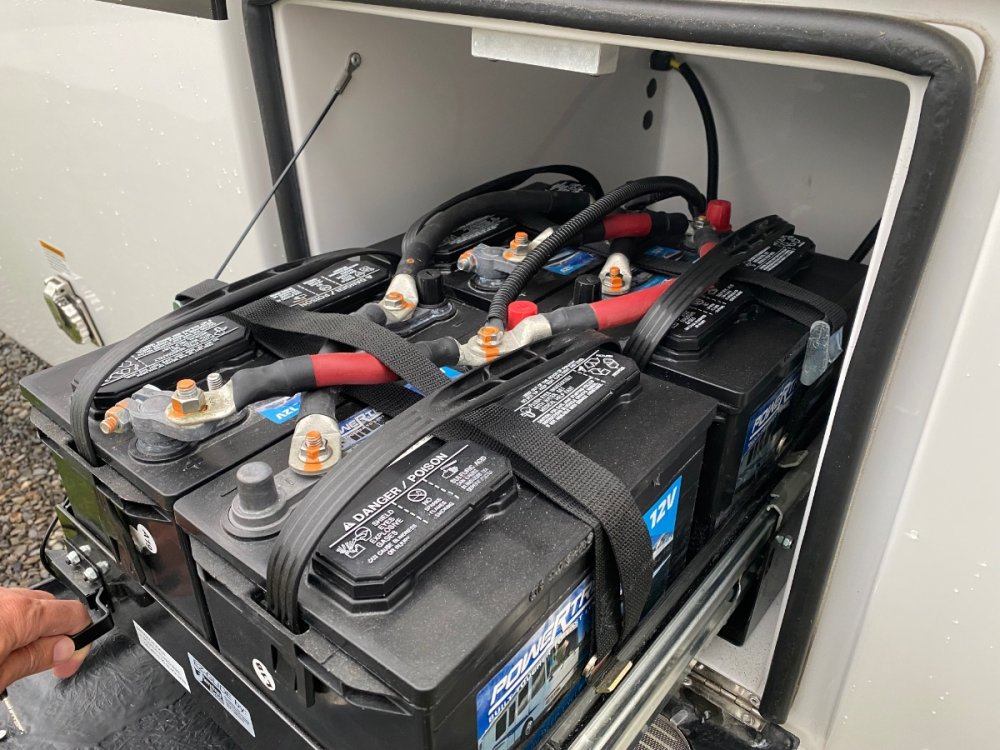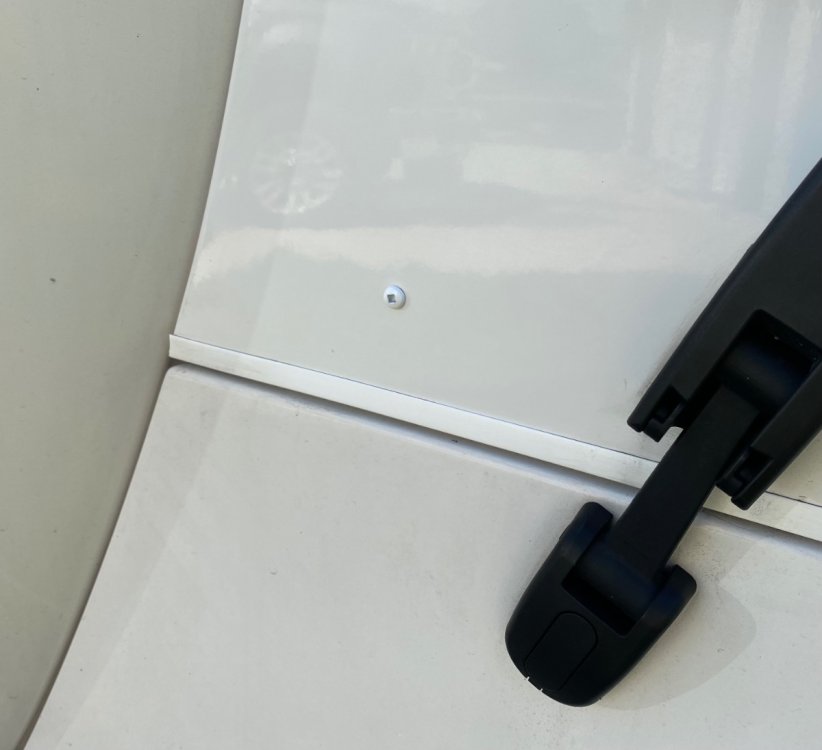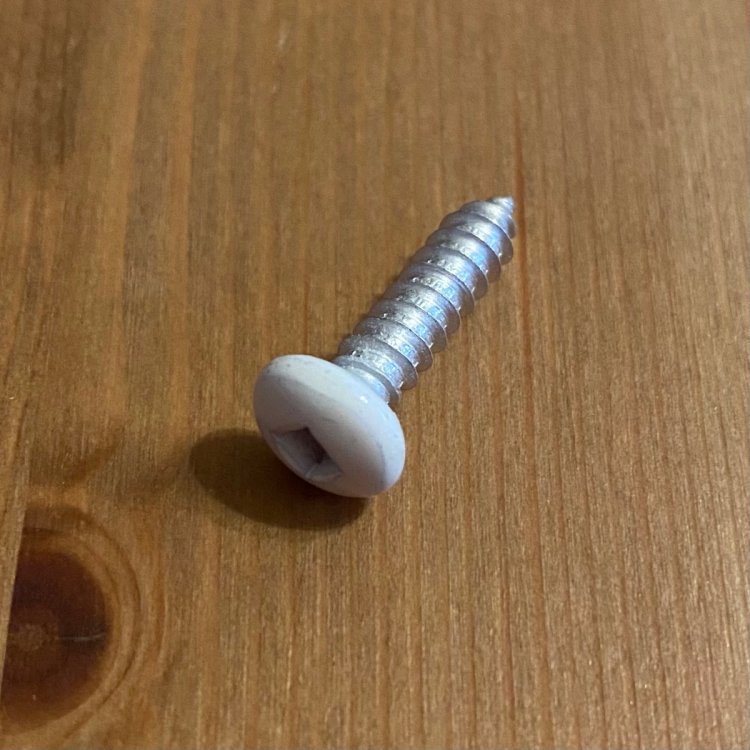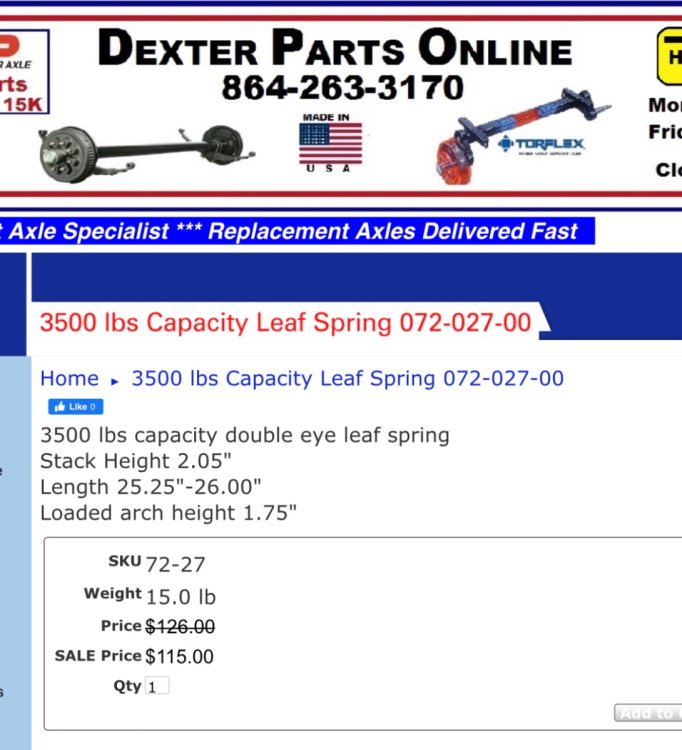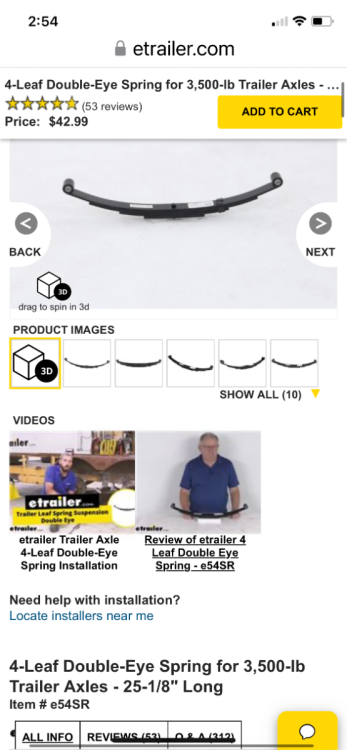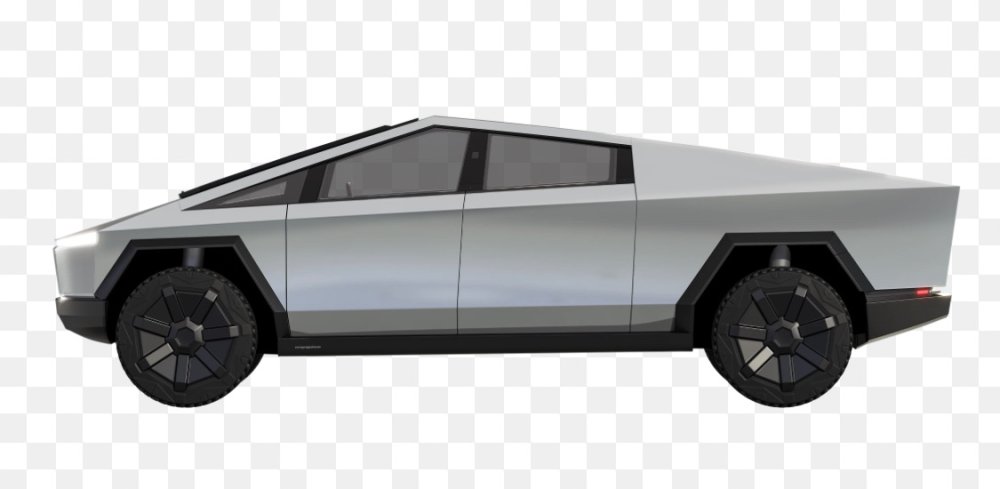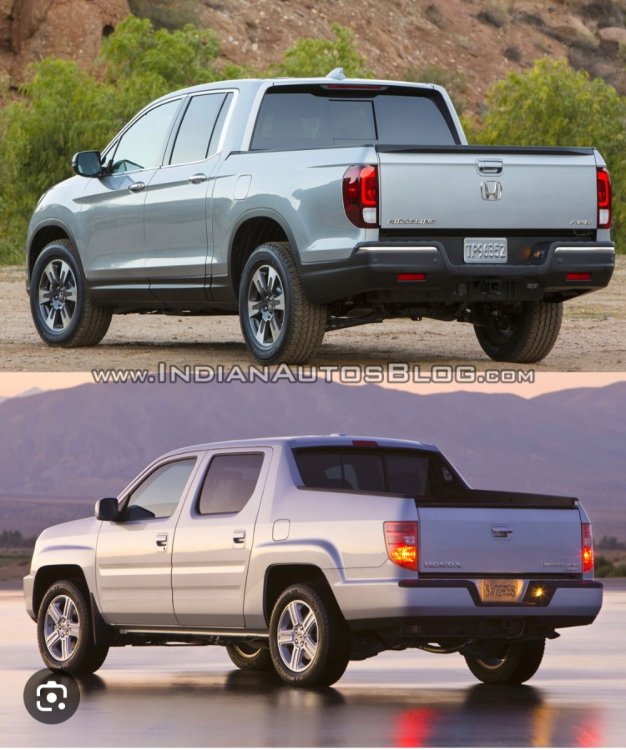-
Posts
781 -
Joined
-
Last visited
-
Days Won
18
Everything posted by Frank C
-
Thanks for the info Steve. Hopefully Oliver management will reconsider at some point in the future. The one unique advantage of used Olivers posted for sale here is that a potential buyer had a very direct channel of communication to a seller, including being able to see the history of that trailer through the previous owner’s posts. And in the case of John Davies recent sale, a LOT of history and background of the many great modifications that John did to show his incredible level of care taken with his trailer.
-
What’s the rationale for no longer allowing posts of used Olivers for sale here on the Oliver forums? Seems like it hurts both Oliver forum member owners and potential buyers by losing one channel of potential sale.
-
The three black wires with the large yellow fuse holders are the 12 volt hot leads for the three stabilizer jacks. On mine they are labeled for a 30 amp fuse. And on most Ollies (including mine) the front jack has another redundant fuse holder located at the jack itself. And you are correct that I have no solar panels on my Ollie. But if you look in my earlier post of my street side bed wiring, you'll notice the coils of heavy gauge red and black wire. At that time (and maybe still now) Oliver was installing the heavy gauge wiring for the solar package, even if the solar panel option was not installed. So the wiring is in place between the hulls from the roof down to the street side bed so the panels can be added in the future if desired. I use a Zamp portable solar panel setup instead connected to a Zamp port that I installed.
-
On my Elite II, the 20 amp breaker is under the street side bed. It’s covered by a red rubber cover. It’s a self resetting breaker, but you can disconnect the black wire that comes from the 7 pin harness. And I get all the electrical/plumbing diagrams from the Oliver university resource on this website. It has manuals by year for the trailers.
-
On older Oliver trailers with lead acid batteries (before the lithium battery option availability) the black wire on the trailer 7 pin harness is the charge wire for the batteries and it IS a direct connection to the positive side of the battery bank (through a 20 amp in-line breaker, see wiring diagram). So that wire/pin on the 7 pin trailer plug connector is energized with 12 volts from the trailer batteries, and that connection allows the trailer batteries to be charged from the tow vehicle while driving. And it is per the SAE standard. It worked with the old Olivers like mine with lead acid wet cell batteries because the tow vehicle alternator charging voltage was sufficient for lead acid batteries, but not with lithium batteries, so Oliver now disconnects that wire on newer trailers with lithium batteries.
-
There are a lot of opinions on tow vehicles, but a tour of any campground shows that the vast majority of people choose full size pickup trucks, 1/2 ton and up, as their tow vehicle. And that’s because it’s about a lot more than just the rated towing capacity of the vehicle. The payload (cargo) weight rating and tongue weight limits are important too, but as John mentioned above, also cargo volume (space) is a major issue. We tried towing with large body on frame SUVs (a Ford Expedition EL extended length, and a Nissan Armada), and found that while the towing weight capacity and cargo weight rating was adequate, the bigger issue with the SUVs was not having enough space for all the things that go along on extended long camping road trips. Things such as bicycles, outdoor rug, camp chairs, awning screen, folding picnic table, clothes drying rack, portable grill, Andersen jack buckets, leveling blocks, large rubber wheel chocks, X-chocks, portable solar panel, water filtration system, generator & gas can, portable waste tote tank, tools, some spare parts, roadside emergency gear, etc. It’s all stuff we actually do use on trips, some folks can get by with less 🙂. And a lot of the camping gear gets dirty/muddy at the campgrounds, so better to store that stuff in a truck bed than the carpeted/upholstered interior of an expensive plush SUV. We finally ended up with an F-250 which meets our needs.
-
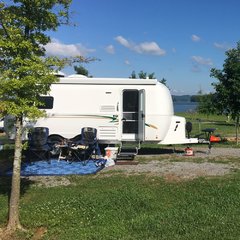
Lukewarm Water
Frank C replied to Mark Penton's topic in Welcome To The Oliver Travel Trailer Forums
Glad that was it. It’s one of those collective knowledge items that you get from this forum. I don’t think it’s actually documented anywhere in any of the instruction manuals. -

Lukewarm Water
Frank C replied to Mark Penton's topic in Welcome To The Oliver Travel Trailer Forums
Make sure both valves (hot and cold) for the outside shower are turned off. If they are left open it allows cold water and hot water to mix in the plumbing system. -
What is the blink pattern on the battery LED? There are different patterns that can help diagnose the issue.
-
I’m on here daily to browse as a “guest” just to see what’s new on the topics, but I’ll only log in if I will be commenting, and then log out again.
-
Your shackles aren’t flipped. All of your photos show the shackles in the correct normal orientation.
-

Using house current while parked
Frank C replied to Mark Meadows's topic in Welcome To The Oliver Travel Trailer Forums
You just need an adapter cable like this and then a standard extension cord. This will let you connect to one of your house 15 amp outlets. But as mentioned above, this does limit you to 15 amps max current draw. Kohree RV Adapter Plug 30 Amp to 15 Amp 110V, RV Power Adapter 15A Male to 30A Female, RV Dogbone Electrical Adapter Cord 12" with Twist Lock & LED Indicator https://a.co/d/2ZZo15P -
Have you confirmed the propane leak with a combustible gas sniffer? Or just with the Oliver alarm going off? If you’re still getting an alarm even with the propane shut off for days, the Oliver alarm may be bad (they do age and need replaced) and it can also be triggered by various air fresheners. Lysol aerosol spray will trigger it, and we just discovered this Glade air freshener will trigger it too if the camper is closed up for a few days (propane tanks off, no propane used for weeks).
-
The leaf springs are the same all around the trailer, side to side and front to back. The 4LF means four leaf ( four leaves on the leaf spring pack). There are other leaf spring packs with less leaves and some with more. The correct ones for the 3,500 pound axles have 4 leaves (1,750 pounds capacity per leaf spring pack x 2 per axle.
-
I haven’t seen any update from SNY SD UP. Hope they got it figured out.
-
Hi and welcome to the forum. As far as advice on trailer camping and retirement in general: 1. Don’t push retirement out too far. I received great advice years ago to “retire as early as financially possible”. And we followed that advice. We’ve know too many friends and relatives who kept putting off retirement for various reasons, and then ended up with health issues, or passing away, that cut short their time to enjoy retirement. There are too many stories like that even here on this forum, and trailers for sale in the classifieds section due to health issues encountered after the trailer purchase. Thankfully we’ve been able to enjoy our time with the Oliver, and have covered a good bit of the continental US at this point, and plan to continue. 2. If you’ve never owned a trailer (or any camping experience?), I agree with the above advice to try renting one and traveling with it first before committing to a big purchase like the Oliver and the necessary tow vehicle. The reality of “traveling the open road and seeing the country” can be a shock to some people compared to their dream. We’ve seen a few folks buy an Oliver, then encounter the reality of camping, trailering headaches, etc. and sell the trailer shortly afterwards. 3. Don’t skimp on a tow vehicle. Get one with more than adequate payload and towing ratings. Most folks consider a 1/2 ton pickup to be the true safe minimum to start with for an Oliver Elite II. 4. Be prepared for all the expenses that come after the trailer purchase (after you get over the initial shock of the Oliver price itself with all the factory options you add). After purchase expenses for the trailer and tow vehicle typically include the following: -Sales tax (6% of the purchase price here in Pennsylvania for us at time of title registration after purchase). -insurance -a trailer cover (the Calmark cover Oliver sells is $1,300) -tire covers for storage. -water filtration system, hoses, fittings, etc. -tire pressure monitoring system -hitch lock -tow vehicle mud flaps such as Rock Tamers -bed cover for the truck -jack blocks -wheel chocks -leveling blocks -extra sewer hose -portable waste water tote tank (for campsites that aren’t full hookup). -portable generator (for boondocking) -misc campsite accessories (chairs, rug, clam shelter, portable grille, awning shade screen, etc) -a good portable tool kit -trailer storage fees -trailer annual maintenance, etc. -repairs! Things do break since RV industry standard components in general aren’t the greatest for durability or reliability. -Harvest Host membership -campground per night fees (cheaper than a hotel but still not free) The list goes on and on, and it really adds up. You can expect another $10,000 to $15,000 in expenses for the above items after the initial Oliver purchase price. Not trying to scare you 🙂, just be prepared with the checkbook. It ain’t a cheap hobby. It reminds me of the boat owners I know who say that BOAT is an acronym for Bust Out Another Thousand 🙂.
-

“Mouse” has gone away with a happy new owner.
Frank C replied to John E Davies's topic in General Discussion
Congratulations on the sale, and best wishes on your future camping plans with the new rooftop tent setup. That looks pretty cool. Glad you’ll be sticking around on the forum. -
Our 2019 Elite II has that 12v fuse panel in the attic next to the EMS remote display. Pics attached of that plus the one under the dinette. The cover of the attic fuse panel also has a handy fuse puller included. There are a lot of variations in Oliver trailer builds over the years due to component substitutions, options and production line deviations/on the fly changes. We’ve joked on this forum that there probably aren’t any two identical Oliver trailers, especially in the early days of the first couple hundred trailers.
-

Minimum lead batteries needed for three travel days?
Frank C replied to Ralph Mawyer's topic in Mechanical & Technical Tips
Hi Ralph, you need to provide details of what type of 4 lead acid batteries you have (6 volt or 12 volt) before you start changing jumper wires into a series or parallel arrangement if you only keep 2 batteries. You didn’t specify in your original post, and you mentioned possibly cutting back to using only 1 battery, so that implies a single 12 volt battery. There are Olivers with FOUR 12 volt lead acid wet cell batteries in parallel (I have this setup. It was offered by Oliver as an option, maybe you have the same setup as this?). See photos below. -
Screenshot from the Dexter website below. It’s one of those things where some people do it and will say “it’s fine, not a problem” (famous last words before many unfortunate accidents). But the manufacturers always take a very conservative (legally protected) approach. Same as the Oliver instructions that the electric jacks are only for stabilizing, not for lifting the trailer for tire changes.
-
The blocks on my cover never came off, but after seeing a few owners have issues, I secured all three blocks with white pre-painted aluminum trim screws (available at any hardware store like Lowe’s, etc., but I had some in my garage parts stash from a previous house project). Drilled through from the outer surface of the cover and into the aluminum block and then threaded in the screw. With the white painted head on the screw, it’s barely noticeable on the white fiberglass.
-
I’m betting it was the front two leaf springs that were replaced, and those 27” long replacement springs are too long. That’s forcing the forward EZflex link up into the trailer frame, and stretching the rear leaf springs to the point that they are flattened. From the Dexter searches I found, it looks like the spring length should be ~25.25” (confusing because the one site part number has a 27). Maybe someone else can confirm the correct Dexter part.
-
It’s already been split to a new thread. Which springs were replaced? The front two or the rear two? From your additional details it’s sounding like either the wrong replacement springs were used and that’s what is causing the odd rear spring sag, or you still have two broken springs.
-
Your shackles are not flipped, but what IS odd is how flat the rear leaf springs are, no curvature at all to the rear leaf springs on either side. Check for any cracks or breaks in the individual leaves on each of those leaf spring packs.
-

Anyone else watch the Tesla Cybertruck launch?
Frank C replied to SeaDawg's topic in Towing an Oliver
One big design flaw I see on the Tesla Cybertruck is accessibility to the truck bed when standing beside the vehicle and trying to reach over those big sail panels on the sides behind the cab. That was a complaint with the original Honda Ridgeline small pickup truck (which Honda fixed with the recent redesign, see photos below). Given the other electric pickup trucks hitting the market like the Rivian and the Ford F-150 Lightning, the Cybertruck just looks like Tesla is putting exotic “futuristic” styling over practical everyday pickup truck function.




